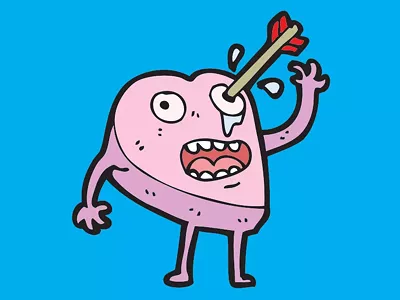Howard Thompson
Writing about the good and the bad is easy. Writing about everything else — the inane, the drab, the mediocre, the outrageous, the baffling — is the hard part. Movie reviewer Howard Thompson, who passed away this past March 10 from pneumonia at the age of 82, did just that for over 40 years during his stint at The New York Times. He was the critic who reviewed the "lesser" flicks, the ones that appeared at the bottom of a weekend multiple bill. He penned blithely brilliant, pithy reviews that appeared in the Times television coverage that his fans — primarily other writers — named after him. He approached each assignment with a lack of contempt, not assuming anything about an Italian sexcapade before he sat in the theater's dark. And not only did Thompson make these reviews look easy, but made them sing as well.
Born in Natchez, Miss., Thompson studied journalism at Louisiana State University before leaving to join the Army, eventually spending six months in Germany as a prisoner of war during World War II. When he returned to the States, he finished his journalism studies at Columbia University and became a clerk under Bosley Crowther, then the Times pre-eminent film critic.
Soon he was a reporter for the movie section, interviewing the character-actor celebrities of his day — British actor David Warner, a still-only heartthrob James Dean — before becoming a full-fledged critic in the mid-1960s. He primarily wrote about the fare that fell through Crowther's cracks — European oddities (Damiano Damiani's 1964 The Empty Canvas with Bette Davis and Horst Buchloz), B-grade American piffle (1964's Elvis Presley two-fer Kissin' Cousins), horror films of all stripes (such as the Hammer films coming out of Britain), and those assignments for which other writers wouldn't volunteer (Hey There, It's Yogi Bear).
He was best known for — and perhaps most effective with — for his one-line capsule reviews in the Times TV listings. Thompson reduced criticism into almost aphoristic snippets that transcended the usual TV writing and did so with a panache associated with the free-flowing repartee of Nick and Nora Charles. These witty rejoinders — which handled classics (Laura, "The venerable model of whodunit sophistication, still a pip"), misguided egos (Albert Finney's 1968 directorial debut Charlie Bubbles, "We'll take Charlie Brown"), turgid melodrama (1951's Ronald Reagan war yarn Hong Kong, "Yesterday's eggdrop soup"), and exploitation folly (1950's I Was a Shoplifter, "So what?") with equal aplomb — became fondly known as "Howardisms" and "Tiny Thompsons."
But the seeds of Thompson's droll economy were sown in the way he approached film criticism, best represented in his 1970 book The New York Times Guide to Movies on TV. For it, Thompson married the incisive opinion that the serious set — Pauline Kael, Andrew Sarris, James Agee — espoused without flaunting his intelligence or condescending to the so-called rabble. His reviews are incandescent studies in simplicity, and Thompson never tried to hide the glee that even the most abysmal movies stir up accidentally.
It's a love of movies — all movies — that is evidenced in the lead sentence to his review of a 1966 Arthur Hiller comedy: "Natalie Wood more or less reviews her own new picture, Penelope, when she sprints to the blackboard, ravenously pursued by an anthropology professor, and chalks up one word: Help!" Thompson pulled such nimble observation of snigger and commentary out of his hat as easy as he breathed, and he seemed to be able to do it until he drew his last. He made reading about movies as fun as watching them, in short: delicious.
Almost famous - Our Annual Salute to the Late Near-Great and Unjustly Obscure Bret McCabe writes for City Paper, where the original version of this feature appeared. Send comments to letters@metrotimes.com






